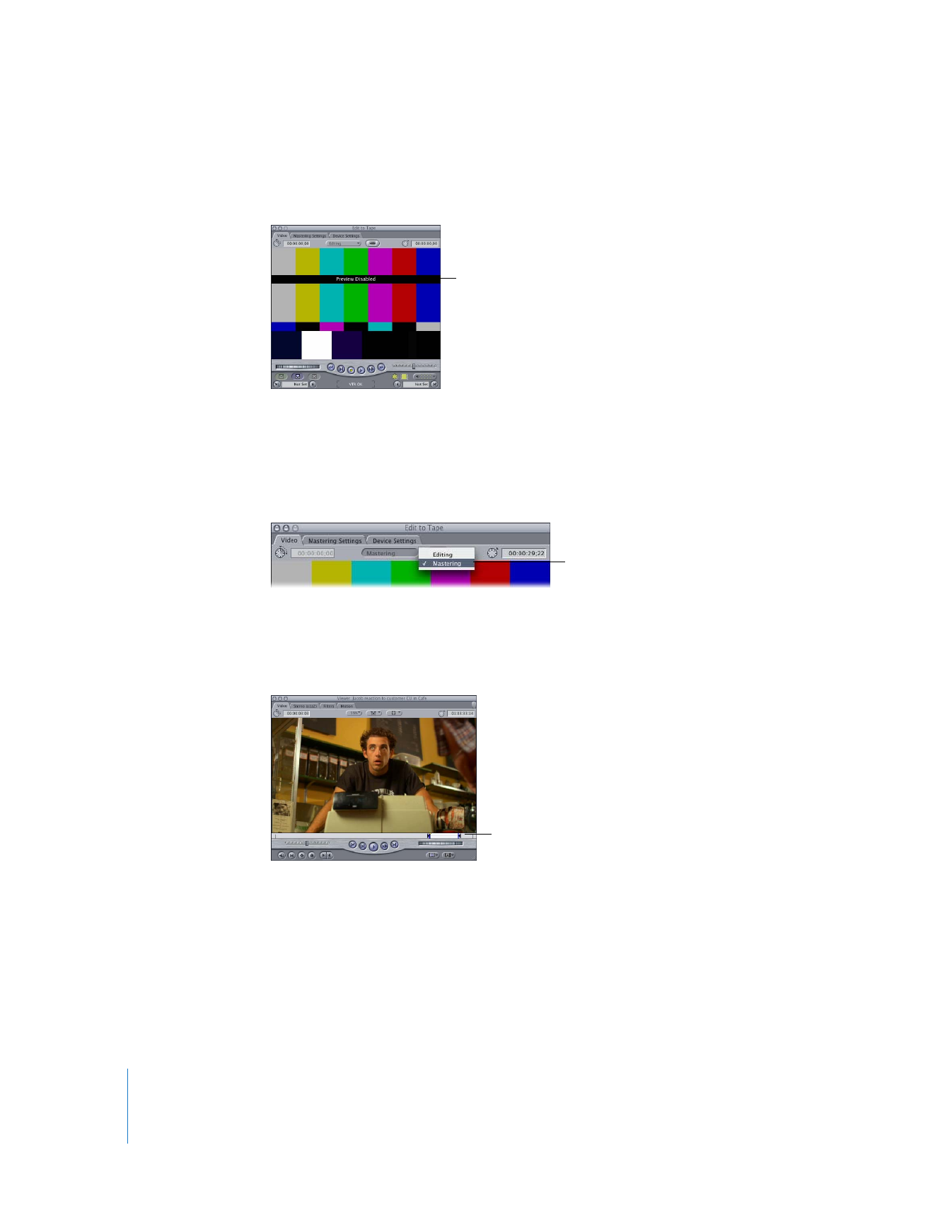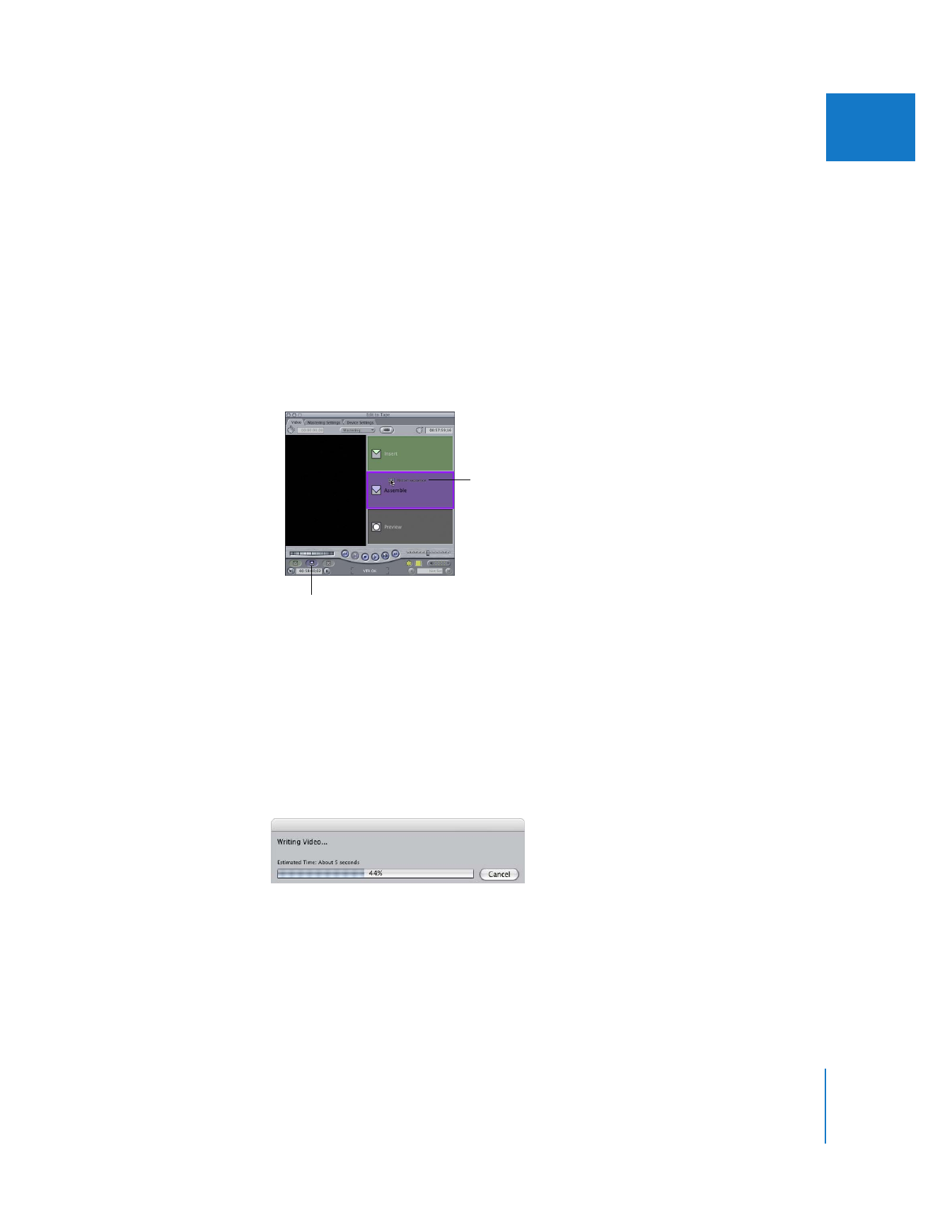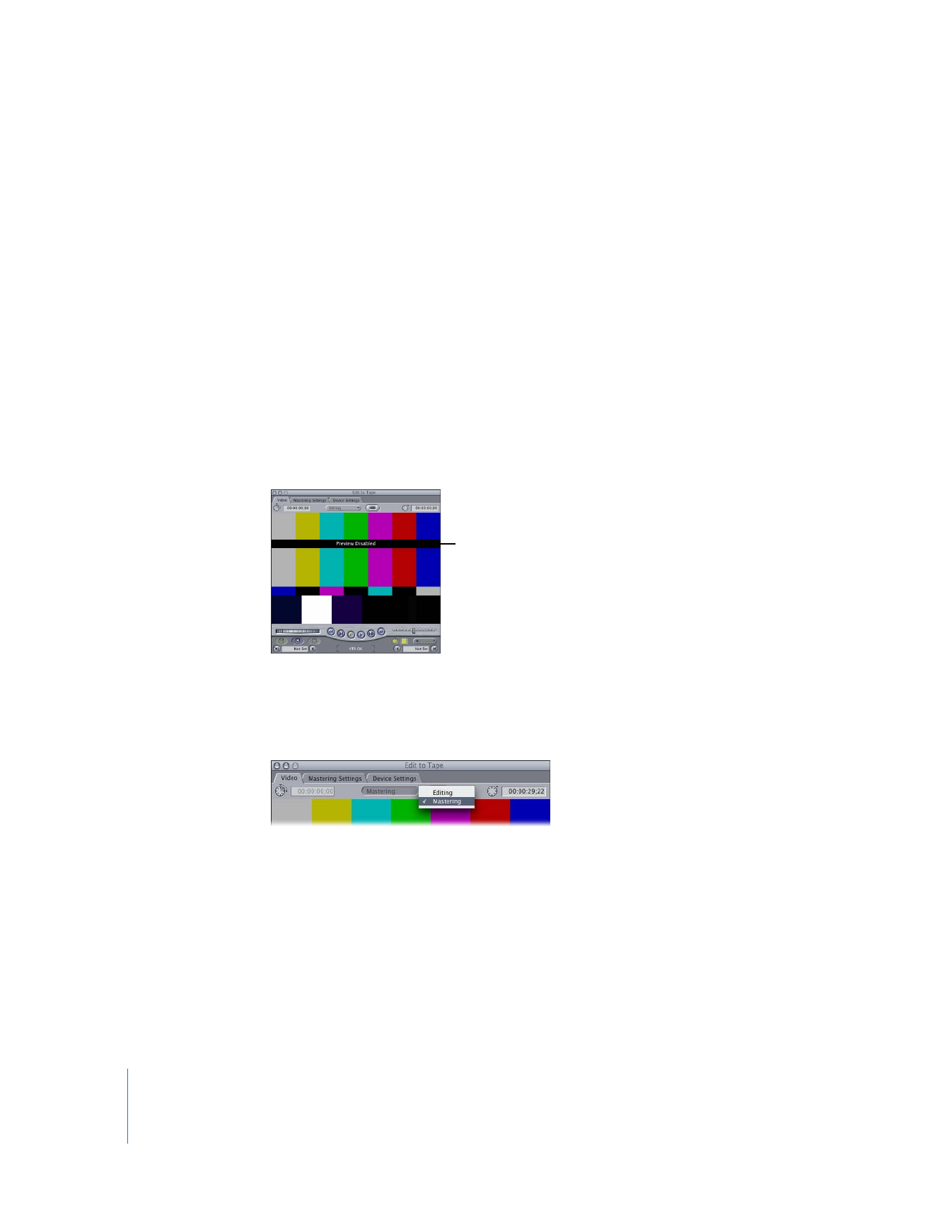
Performing an Assemble Edit to Tape
Assemble editing begins recording the signal on tape at the predetermined timecode
In point. For details, see “
About Assemble Editing to Tape
” on page 199.
Note: If you are outputting to DVCPRO HD via FireWire, the timecode recorded to the
tape can start from the existing tape timecode or you can choose to create new
timecode on the tape based on the sequence timecode. If you choose this option, the
timecode written to tape is the same as the sequence timecode.
Important:
Make sure you’ve read and followed the instructions in Volume 1,
Chapter 11, “Connecting DV Video Equipment.”

210
Part III
Output
To do an assemble edit:
1
Choose File > Edit to Tape.
In most layouts, the Edit to Tape window appears on top of the Canvas.
2
Choose Editing or Mastering mode from the pop-up menu in the top center of the window.
For more information about the Editing and Mastering modes, see “
Video Tab
” on
page 201.
3
Select a clip or sequence in the Browser.
4
If you haven’t already done so, set In and Out points for your clip or sequence in the
Viewer, if you don’t want to output the entire clip or sequence.
5
In the Edit to Tape window, cue the tape where you want to start your initial edit, then
press I, click the Mark In button, or type a value and press Return.
Note: You do not need to set an Out point for an assemble edit.
The preview option is
disabled if you are using
DV equipment.
Choose a mode from this
pop-up menu.
If desired, set In and Out
points for the part you
want to record.

Chapter 14
Assemble and Insert Editing Using Edit to Tape
211
III
6
If you are including leader elements using Mastering mode, click the Mastering
Settings tab, then select the elements you want to include before and after your
sequence or clip.
For an explanation of the leader and trailer options, see “
Adding Standard Leader and
Trailer Elements
” on page 208.
7
To perform the assemble edit, do one of the following:
 Drag your clip or sequence from the Viewer or Browser to the Assemble section of
the Edit Overlay.
 Open your clip or sequence in the Viewer, then click the Assemble Edit button.
 Drag the clip or sequence to the Assemble Edit button.
Transitions and effects that require rendering, along with any added elements, are
rendered automatically prior to output. A dialog shows you the rendering progress of
your sequence or clip. You can also choose to output unrendered real-time effects at a
lower quality, saving time by avoiding rendering. Options for choosing the quality of
rendered effects during Print to Video and Edit to Tape operations can be set in the
Render Control tab of the sequence settings and in the Real-Time (RT) pop-up menu in
the Timeline. For more information on setting these options, see “
Render Control Tab
”
on page 366.
Note: All audio that requires rendering is automatically rendered with a render quality
of High, regardless of the render quality setting.
A feedback window appears when the edit is done.
8
To cancel an edit in progress, press Esc or click Cancel.
Drag the clip or
sequence here to
do an assemble edit.
Or click the Assemble
Edit button.

212
Part III
Output